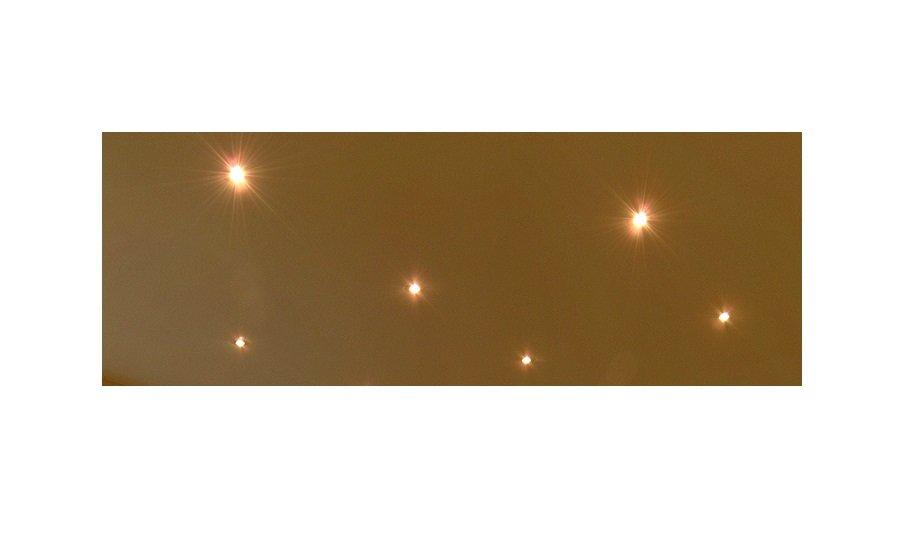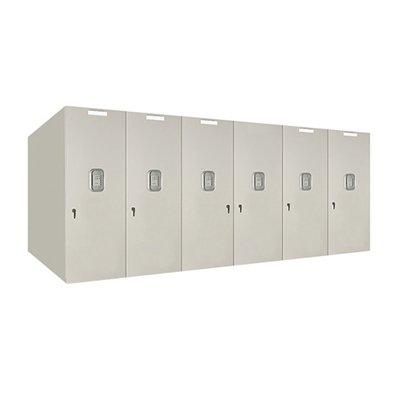Light-emitting diodes have been around for years. But within the past decade, LED’s have gone from being simple indicators on electrical devices to brilliant white light sources capable of illuminating colossal spaces. Marie Parry of the Scolmore Group looks at the latest developments within LED lighting.
The pace and performance of LED lighting continue to accelerate. The market has grown beyond single color and color-changing applications into general illumination applications for residential and commercial projects. Such has been the rapid rate of development that there are LED replacements for virtually every traditional light bulb available.
UK LED lighting market
In 2013, the UK LED lighting market was estimated to be worth £330 million at manufactures’ selling prices (MSP), which includes all finished, mains-operated LED lighting products, domestic and non-domestic used within construction and building.
The market is experiencing an explosion in growth as the new technology continues to become more widely accepted in the mainstream lighting market, further encouraged by the demand for energy efficiency and cost savings and CO2 concerns, driven by legislative changes, in turn resulting from environmental pressures.
Market penetration of LEDs
Market penetration is expected to continue rising and the gap in prices for LED’s and CLF’s is already closing
According to IMS Research, the best years for LEDs will be 2013 to 2017, with the value of the market for high-brightness LEDs used in general lighting applications likely to peak in 2017 before dropping away as the cost of the technology falls sharply. Over that period, market penetration is expected to grow massively from its current unit level of only a couple of percent to 10% in 2014 and 25% by 2017.
The size of its market share is down to the difference in the price of LED against traditional lamps. As the price difference narrows, market penetration is expected to continue rising and the gap in prices for LEDs and CLF’s is already closing.
LED prices
LED prices are continuing to fall as volumes are increased, while the cost of phosphors has recently risen by about 40% - a result of the rare earth metals crisis. Every manufacturer of fluorescent lamps in the lighting industry depends on rare earth materials, which are a critical component in the phosphors used in energy-efficient fluorescent lamps.
95% of the world’s supplies of rare earth oxides are controlled by China and China is imposing new tariffs and mining regulations while at the same time reducing exports by up to 40%.
Impact of infrastructure
Many councils are replacing and planning to replace conventional street lighting with LED lighting
The market is largely reliant on total system upgrades and new installation applications. As a relatively new market, replacement products have therefore much less influence on performance than in overall lighting at this stage. Non-domestic end-users dominated in 2013, accounting for 96% of market value, while the domestic sector was estimated to account for £13 million.
Infrastructure is the sector within LED lighting with many councils replacing and planning to replace conventional street lighting with LED lighting. They are attracted to the significant energy cost savings, lower CO2 output, and long life cycles primarily.
Reducing energy consumption
As part of Leicester City Council’s commitment to reduce its energy consumption and carbon footprint by 50% before 2025, the Street Lighting team is changing its high and low-pressure sodium lighting stock to energy-efficient LED’s which will help towards achieving the Council’s pledge.
The new LEDs will also be connected to a computer system that will monitor the street lights (luminaries) by looking at their performance, dimming levels, detecting faults, and even measuring how much energy the street light is using.
Central Management System
City Council aims of replacing every old-style sodium street lamp in Leicester with energy-efficient LEDs
The City Council began its three-year street lighting energy reduction program in 2013 intending to replace every old style sodium street lamp in Leicester with energy efficient LEDs. The project will see all 33,000 of the city’s existing sodium lamps replaced with low-energy LEDs.
A new central management system, which will allow the brightness of the new lamps to be varied through the night to suit local requirements, is also being installed. The program will cost £13.8million and is due to be completed by February 2016.
LED lamps reduce energy cost
Once complete, the new LED lamps will help the council reduce the energy cost of the city’s street lighting by at least 57 percent, and help cut carbon emissions by over 5,300 tons each year.
Street lighting currently costs the city council £2million each year. Based on estimated savings of about £1.2million per year, the street lamp replacement project is expected to pay for itself in just over ten years. The new LED lamps are expected to last a further ten years before a program of replacement is likely to be required. The city’s existing sodium lamps were replaced on a four-year cycle.
LED luminaires
LEDs are often installed as part of a larger refurbishment or new build project requiring new luminaires
The Leisure & Entertainment and Health & Education sectors have been high early adopters of LED lighting and will continue to be the major end-use sectors in the near to medium term. Retail use is growing, whilst office, industrial and lastly domestic use will expand significantly over a longer period.
In 2013, the LED lighting market was characterized mainly by sales of LED luminaires, accounting for 75% of the market, with the rest of the market made up of Replacement LED lamps and LED controls and accessories. The new use of this technology for lighting often requires the installation of specific luminaires to achieve the full benefits and this also reflects the fact that LEDs are often installed as part of a larger refurbishment or new build project requiring new luminaires.
LED replacement product
There has been significant development of replacement products for traditional bulbs/lamps, where the LED replacement product has been specifically designed to fit the original luminaire, thereby widening the scope for LED market growth.
Product development within LEDs is focused on the development of retrofit products, greater efficiency, and improved color rendering index (CRI).
Energy-saving control systems
Manufacturers are also researching newer and cheaper ways of manufacturing to bring costs down
Manufacturers are also researching newer and cheaper ways of manufacturing to bring costs down. Controls are becoming more sophisticated with the trend towards greater monitoring and energy-saving control systems for lighting.
Historically LED products have been significantly more costly than alternatives, and have failed to deliver the same light output as their incandescent or halogen counterparts, and this has restricted volume sales, particularly in the domestic sector.
Reducing manufacturing costs
However, the average price of LED lighting products has fallen in the last 12 months, driven by the growing volumes of sales, manufacturing techniques, and increasing competition in the UK market.
The market has made significant advances and offers end-users a more competitively priced and reliable product that can more closely match traditional lamps, making them far more appealing to consumers.














